By Katie Rodriguez
Statia is often advertised as a relic of the Caribbean in the 1970s, unsaturated with tourists and attractions, but it holds even older history. Everywhere you walk, there are artifacts scattered on the ground, from prehistoric conch shells and pottery to 18th-century porcelain from China.
When I received the email that I was accepted into this field school and research project, I could not visualize myself doing something so amazing. The history here is so rich; I was so excited to dig into this abundant archaeological record.
Our field session began with digging units near a rum distillery. We learned important archaeological techniques that were beneficial for excavation of the cemeteries, which can be very technical. In those first few days, we established the requirement of playing music during our work, so I often took 3-second dance breaks.
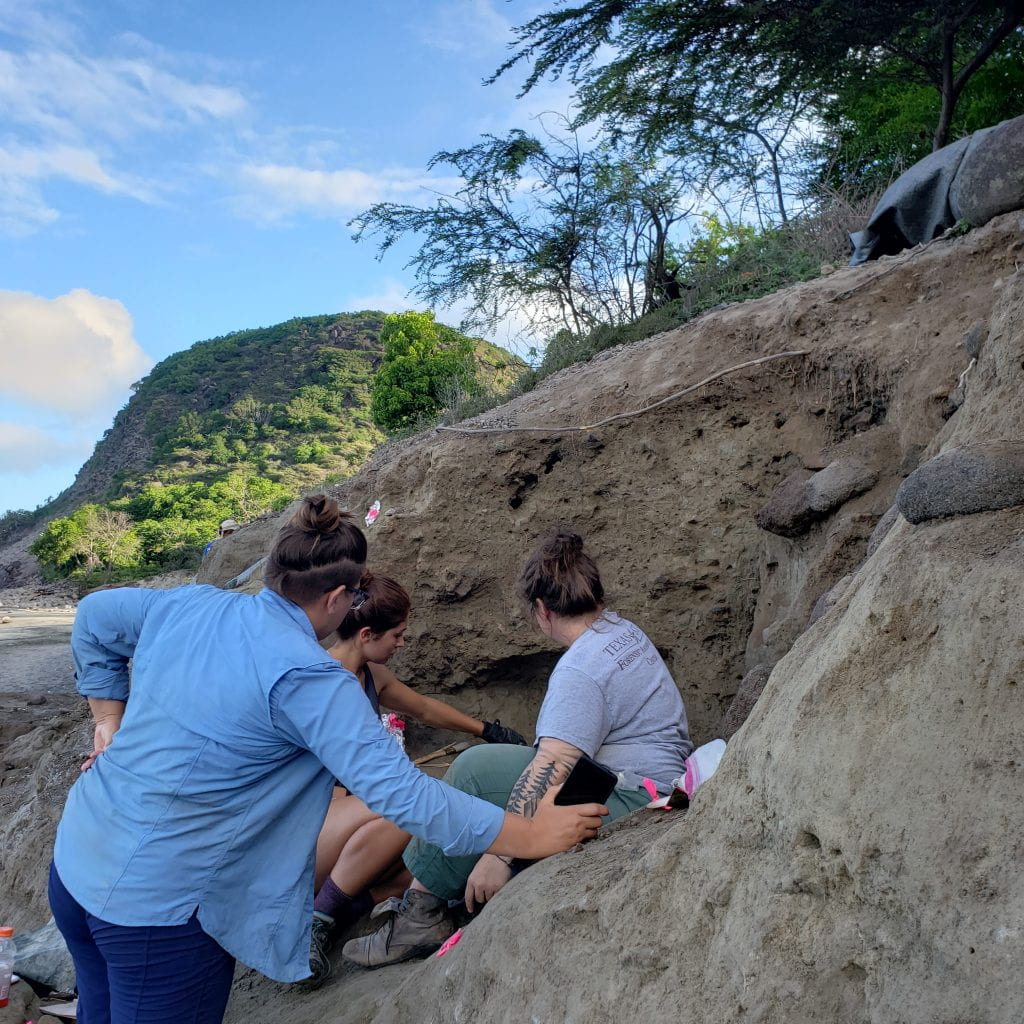
Our T.A. Courtney helping Adrienne and me.
I worked with the forensic archaeology team to excavate burials of enslaved Africans that are eroding out of a cliff and at risk of falling into the ocean. By recovering their remains, we can open a channel to tell the stories of their lives that are almost wholly erased by historical records.
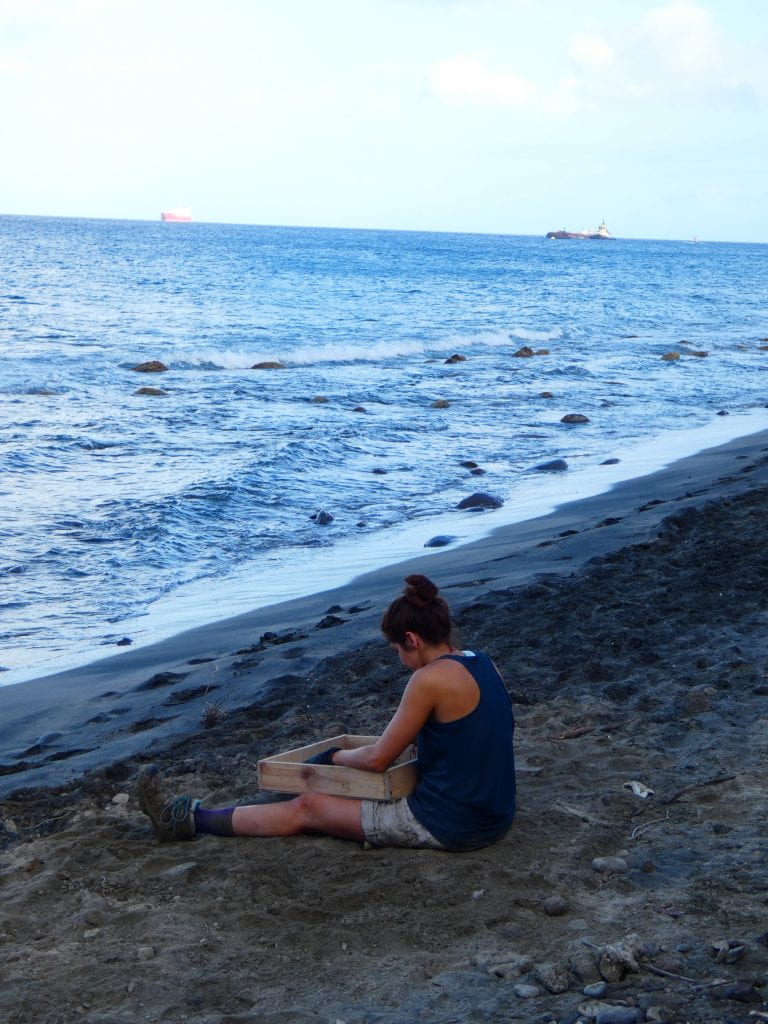
Our beautiful view while sifting.
For my personal research, I conducted geophysical surveys of the Old Church Cemetery and the Jewish Cemetery. A geophysical survey essentially sends waves into the ground or detects magnetic changes and records this information for analysis. The goal is to find human-made features and objects like buildings, roads, magnetic objects, or in my case, graves. I did this at these particular cemeteries because (1) they are both deteriorating, so there are likely unmarked graves, and (2) during the 17th and 18th centuries, there were tensions between these two religious groups on the island, yet the cemeteries are right next to each other. My goal is to relocate these hidden features and look for any relationships in burial practices.
I learned an incredible amount of information about archaeological fieldwork and how it is conducted. I could not have attended a better field school program. The REU is so beneficial for students to dive into their field of research. This project pushed me out of my comfort zone as a student and allowed me to have wonderful adventures on the island.
Before this trip, I was scared of swimming out in the ocean, especially because of the slimy fish. By the end, I snorkeled for half a mile while trying to dive into schools of fish to see them up close. We even toured a few underwater archaeological features as a group.
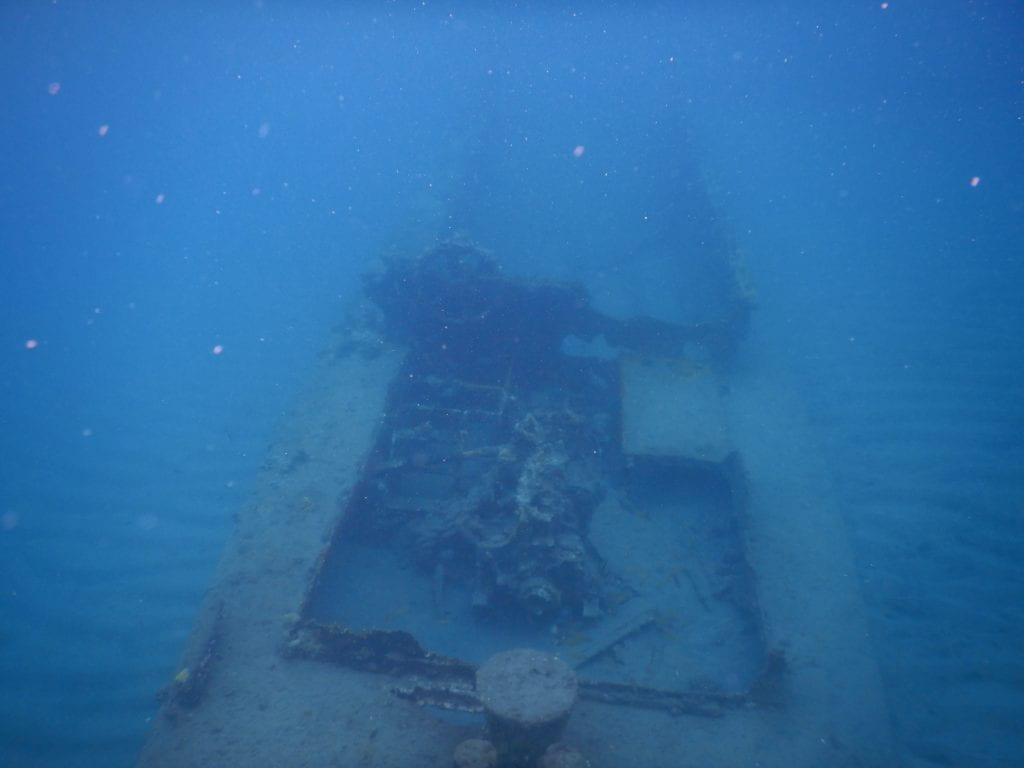
A sunken ship we snorkeled to.
One Saturday, a group of us hiked the Quill, the island’s dormant volcano. The trek up provided stunning views, but the best part was walking into the crater. There was a micro-climate like a jungle with enormous trees and hanging vines. One tree had a huge rope tied to it, which I got on and then slammed my head onto the trunk of the tree on my backswing. We also found another tree that had a “shirt pocket” that you could climb into and sit in the bark.
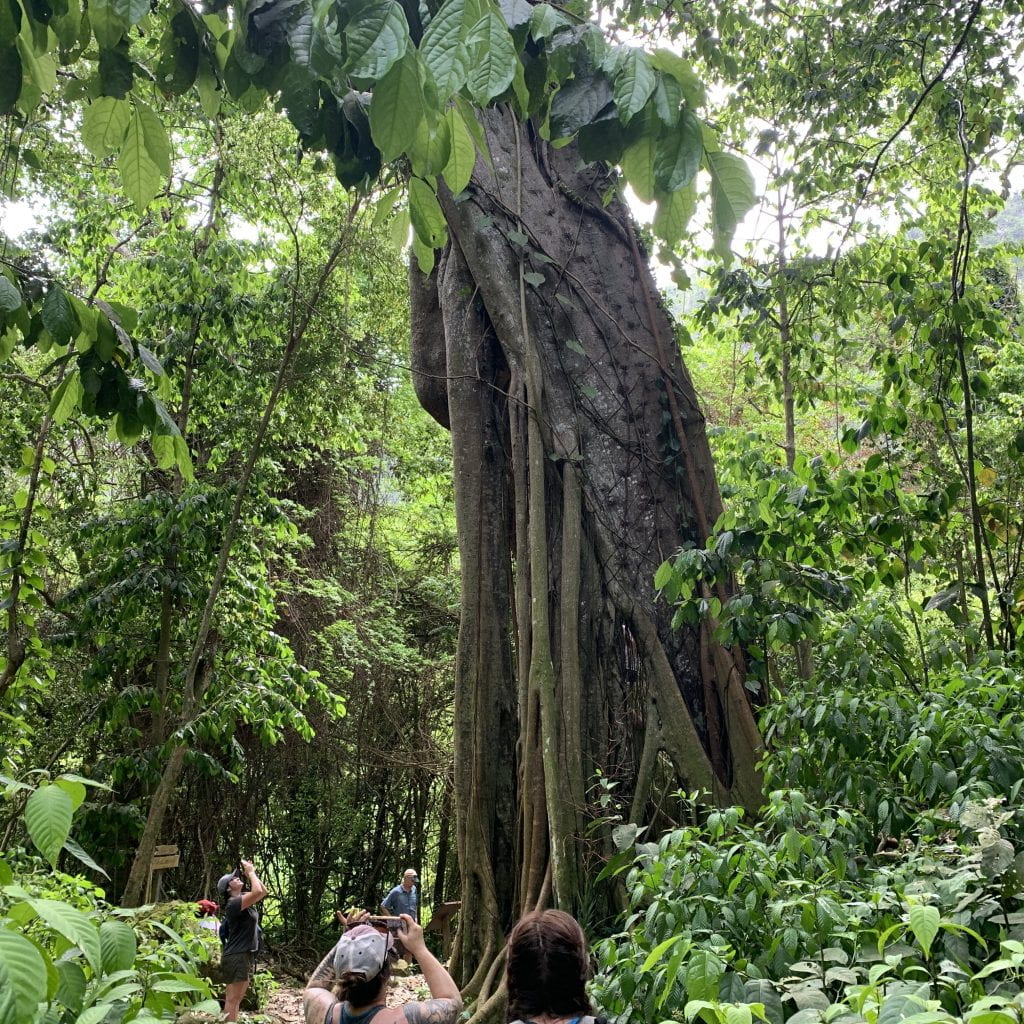
An enormous tree with a rope swing in the Quill’s crater!
I really appreciated this opportunity to make cross-cultural connections. It is customary to greet every person that you see with good morning, good day, or goodnight. I love how humanizing this is. Too often in the U.S., we walk down the street trying to avoid eye contact. This feels cold and isolating to me, so I appreciated the warmth of this simple act. In general, Statians are easy-going and friendly. At one point, I lost my prescription eyeglasses. Once I gave up looking, I jokingly asked a group of Statians to bring them back to CNSI (where we stayed) if they saw them. Two days later, one of them showed up with my glasses!
On our last day in the field, we looked out towards the horizon where two rainbows slowly appeared with each end extending into the ocean. Dr. McKeown screamed, “shark!” and I jumped up and ran to see a lemon shark in the shallows a foot away from me. As magical as this sounds, it barely describes how beautiful this entire experience was.
Statia truly holds a very special place in my heart, and I am so excited to continue my research about this fascinating place. So much thanks to the restaurants who served our huge group, all the folks at SECAR, CNSI for hosting us, my wonderful peers and T.A.s for being their awesome selves, and most importantly to Dr. Ahlman, Dr. McKeown, and Dr. Herrmann for their patience and mentorship.
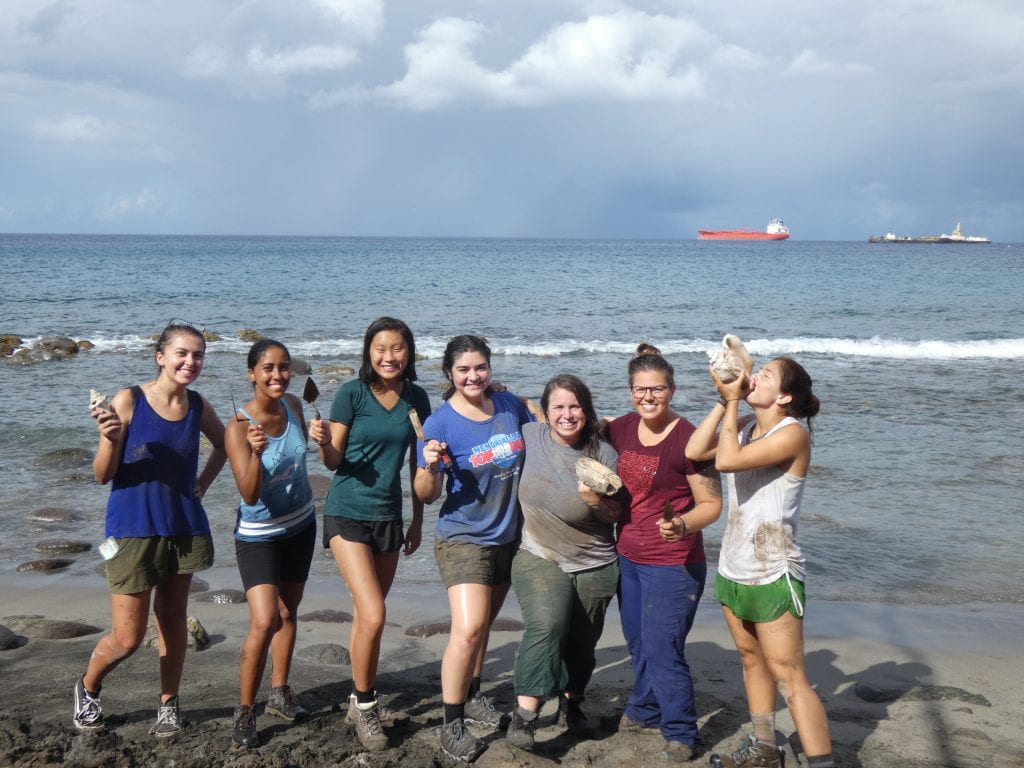
The forensic team’s last day of excavation featuring trowels and conchs.